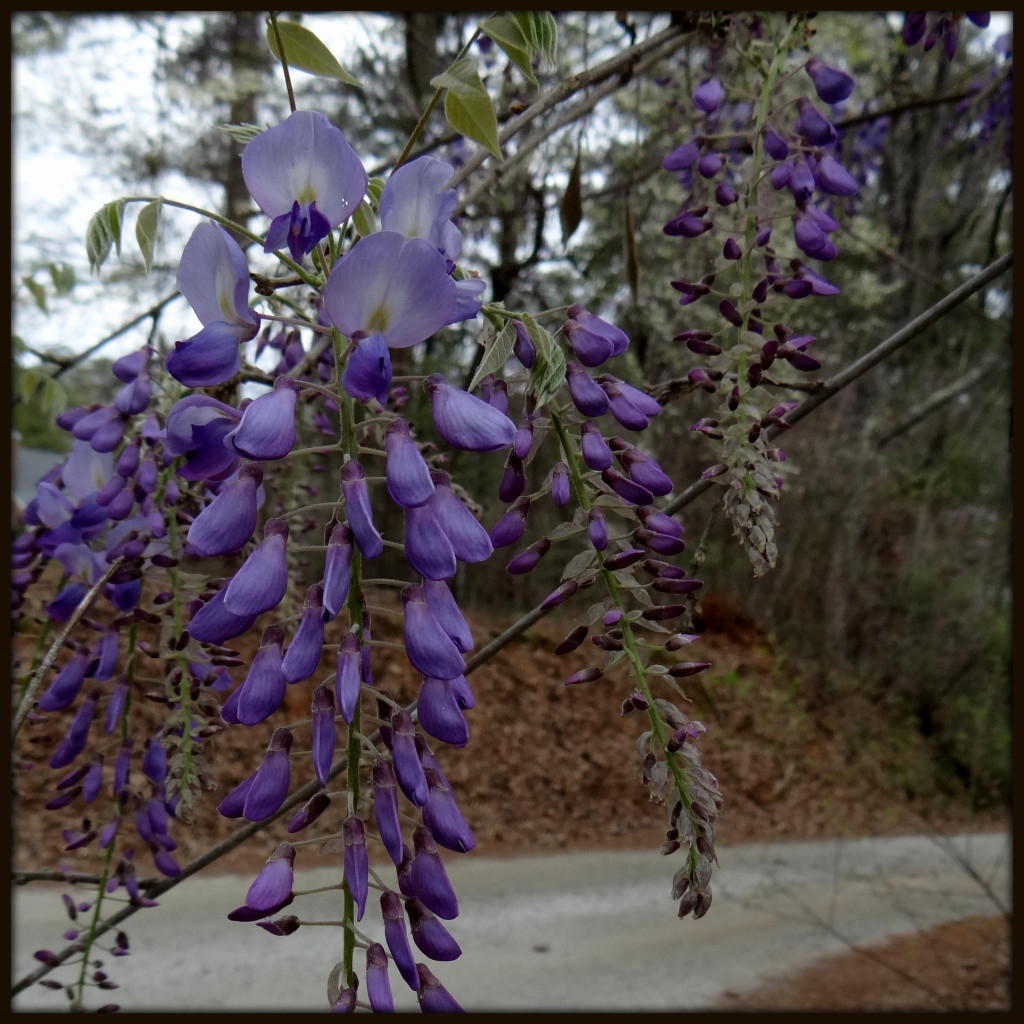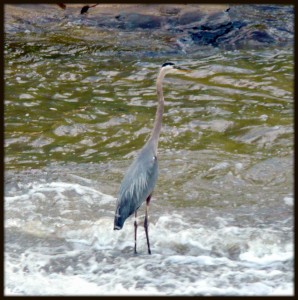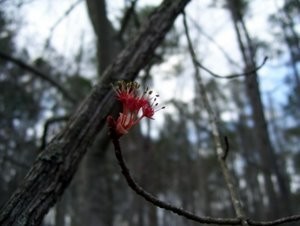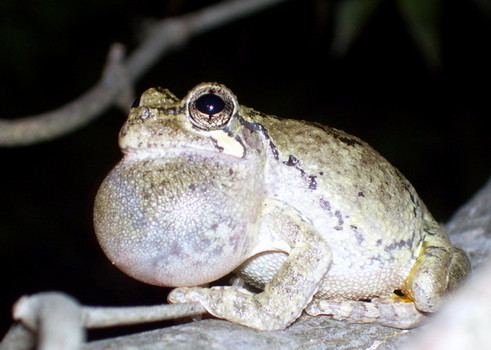This article is written in celebration of weeds. Growing right under our noses (and sometimes overtopping our heads), weeds flourish in plain sight without garnering much attention. Perhaps we have learned to identify a few of them, and maybe we have attempted to uproot some from our garden beds, but often that is as far as our knowledge goes. Yet weeds are often among the most fascinating, and complex, plants that one could find anywhere. Many have a dozen or more common names, reflecting generations of identification and use. Quite a few have medicinal properties (or are believed to have them), and many can be eaten (though elaborate preparation is sometimes necessary). And, rather like superheroes from the pages of comic books, many weeds have evolved special powers that enable them to triumph over other plants, maintaining their status as the dominant vegetation on a patch of ground from one year to the next.
In the coming paragraphs, we will examine three weeds that the author encountered during a couple of late summer strolls in Georgia. They have quite a bit in common, actually. All of them have “weed” in their common name. All of them were written about back in the mid-1800s by the natural philosopher of Walden Pond, Henry David Thoreau. And each of them was used by the author at some point – one for a skin salve, and two for food (though neither one has become a mainstay of his diet). And they can all be found growing wild across much of the eastern half of the United States, perhaps even in your own backyard.

The first one, jewelweed (Impatiens capensis), has translucent stems, serrated oval leaves, and yellow-orange trumpet-shaped flowers. An inhabitant of moist, shady places, it goes by a wide variety of common names which lend themselves to haiku composition: spotted touch-me-not / lady’s earrings, silverleaf / orange jewelweed. Most of the plant’s names relate to one of two properties (except lady’s earrings, which likely refers to the shape of its flowers). The first stems from how water behaves on its leaves; microscopic hairs on the leaf surface trap air there, causing water to form droplets on the leaf surface, like jewels (jewelweed), giving the leaf a silvery appearance (silverleaf). The name “jewelweed” may also originate from a curious property of the plant, called guttation. This is a process in which the leaves expel excess water during the night, causing the leaf edges to sparkle with regularly-spaced small beads of water, like a string of jewels in the morning sun. (You can view a photo of this phenomenon here.) The other property is the unusual behavior of its seed capsules. When ready to disperse their ripened seeds, the coiled capsules burst open in the wind or upon contact by an animal. As Henry David Thoreau described, in his posthumously published Faith in a Seed, “Touch-me-not seed vessels, as we all know, go off like pistols on the slightest touch, and so suddenly and energetically that they always startle you, though you are expecting it…. They even explode in my hat as I am bringing them home.”
What Thoreau did not mention about jewelweed is that it produces two kinds of seed pods, formed from different kinds of flowers. The orange-yellow flowers reproduce sexually, through pollination by bees, wasps, and ruby-throated hummingbirds. As a result, the seeds that form have high genetic diversity, and can thrive under a range of conditions. The pods of these flowers spring open explosively, transporting the seeds a fair distance from the plant, to new locations that may be different from the ones of the original one (less moist soil, more shade, etc.). There are also much smaller, green flowers that bud but never open. These are self-pollinated, and therefore are identical to the parent plant. They have smaller pods that burst open with much less vigor, releasing seeds nearby, in conditions that are usually similar to that of the parent plant. As a result of this “special power”, jewelweed is able to dominate a moist spot of ground even though it is only an annual (the plants die completely each year).
In the author’s childhood memory, a patch of jewelweed grew in a mucky area at the edge of the family property, and one of the author’s older brothers showed him how the stem could be uprooted and sliced open lengthwise with a pocketknife. The translucent gel inside could then be applied to the skin as a salve for poison ivy and insect bites; if used immediately after contact with poison ivy, it could even neutralize the oil in the leaves (urushiol), and thereby prevent a rash from developing. On walks in the woods behind the house, the author would often carry a bit of it along in case of touching poison ivy (which seemed to thrive everywhere on the trails). Jewelweed has served a variety of purposes: native peoples drank jewelweed to treat cramps; the young shoots could be boiled and drained a couple of times, then eaten as a semi-palatable green; and the plant juice could even be boiled and used as a dye for clothing.

The second weed of the trio is pokeweed (Phytolacca Americana), also known as American nightshade, American spinach, bear’s grape, Indian greens, poke sallet weed, inkberry, pigeonberry, redweed, and skoke. (“Pokeweed” likely comes from the Algonquin “pokon”, meaning “bloody plant”, in reference to the color of the berry’s stain.) Fully mature, pokeweed looms over most other herbaceous plants, reaching heights of four to ten feet and stalk diameters of up to four inches. Its large spikes of white flowers in July give way to round purple berries by summer’s end. Because flowers can self-fertilize if insect pollinators are not available to do the job, nearly every flower bears fruit.
Even without the explosive seed capsules of jewelweed, pokeweed is still able to disperse itself considerable distance, thanks to the appetites of many animals. Once an important food source for the extinct passenger pigeon, pokeweed provides fruit for the mourning dove, bluebird, mockingbird, cedar waxwing, and many others, plus squirrels, mice, mice, raccoons, and opossums. It is often found in locations where a bird would perch, and can become quite abundant in disturbed areas such as roadsides and vacant lots. All parts of the adult plant are poisonous to humans – children have even died from eating the berries. The plant is such a stockpile of toxic chemicals that even getting the plant juice on one’s skin can cause a rash. Its toxins include oxalic acid, saponins, and an alkaloid (phytolaccin).
In addition to having lots of fruit-loving animals to aid in dispersing the seeds, pokeweed has another “special power” to help it take its place as a dominant plant: allelopathy, or chemical warfare. Pokeweed produces growth-inhibiting chemicals that prevent other plants from getting too close, enabling pokeweed to form large stands, as Thoreau observed in his posthumously published manuscript, Wild Fruits: “I find [poke] oftenest and most abundant on rather elevated and rocky ground, as sides of hills in sproutlands, where they grow in a community. In such places the large, bending, tree-like plants stand close together, and their drooping racemes almost crush one another, hanging around the bright purple…stems…. Their sour juice makes a better red or purple ink than I have bought.”
Nonetheless, as the names “American spinach” and “Indian greens” suggest, pokeweed can still be eaten. The edible parts are the young leaves, which can be eaten when less than six inches in color (before the veins turn red), and preferably only after boiling. The youngest green shoots can also be consumed raw; the author has done this, though he would have to say that they did not have much of a flavor to them.

The last member of the weed trio is milkweed (Asclepias syriaca), which grows from three to five feet in height with thick oblong leaves that are shiny on top and downy underneath. It bears sweet-smelling, reddish-purple flowers, only two to four percent of which yield seeds. The seeds are attached to floss, cottony parachutes, and contained within a large seed pod. This floss is the origin of some of milkweed’s other names, including silkweed, wild cotton, and cottonweed. Native Americans used the floss for blankets and clothing, and New Englanders in the 19th century used it for mattress stuffing. Commercial production briefly boomed in Michigan during World War II, when patriotic citizens (particularly children) gathered the floss for use as lifejacket padding.
Milkweed gets its name from a milky latex that flows throughout the plant. The plant also contains toxic chemicals in the form of cardiac glycosides. Monarch butterfly caterpillars feed on the milkweed leaves, ingesting the glycosides and making them toxic, in turn, to would-be predators. Despite the fact that the monarch caterpillars specialize on milkweed, they still fall victim to the latex, which gums up their mandibles while they are chewing the leaves, and also pools near a cut in the leaf, trapping young larvae. About a third of all monarch caterpillars succumb to the latex, while many others (despite their growing toxicity) fall victim to predators. Only between three and eleven percent of monarch caterpillars survive to become butterflies and embark on their epic journey south to Mexico.
Like jewelweed and pokeweed, milkweed is edible – provided the toxins have been removed first. The flower buds can be gathered, boiled and drained three times, and eaten with no ill effects. Unlike the other two weeds, milkweed is buds are actually quite tasty (reminiscent of overcooked asparagus), though the triple-boiling requirement makes them rather labor- and energy-intensive to prepare on a regular basis.
In the late summer, the milkweed seed pods turn brown and crack open, releasing all of their seeds to the wind. Most do not travel far, though this did not keep Thoreau, in Faith in a Seed, from imagining great journeys: “I do not see but the seeds which are ripened in New England may plant themselves in Pennsylvania. At any rate, I am interested in the fate or success of every such venture which the autumn sends forth. And for this end these silken streamers have been perfecting themselves all summer, snugly packed in this light chest, a perfect adaptation to this end – a prophecy not only of the fall, but of future springs. Who can believe in prophecies…that the world would end this summer, while one milkweed with faith matured its seeds?”
But in case all of those wind-borne seeds are not sufficient, milkweed has a “special power” to enable it to spread rapidly, overtaking roadsides and even cultivated fields and gardens. In addition to reproducing by seed (which takes two to three years to form a new flowering plant), milkweed can also reproduce by means of lateral roots, generating clones of itself that can quickly overwhelm an area. (Ironically, these clones are the reason the flowers produce so few seeds; most of the pollen reaching the flower comes from genetically identical plants, and therefore does not fertilize the flower successfully.) Indeed, milkweed is on the march; once found predominantly in the northeastern and north central parts of the country, milkweed is now establishing itself in Georgia and the Gulf States.
Here, this author offers a closing confession: the milkweed on his property was all sown from seed dispersed not by the wind, but by monarch butterfly enthusiasts, handing out seed packets along with bumper stickers reading “Got milkweed?” The idea behind the seed-planting campaign is that the more milkweed plants are available to host monarch butterfly caterpillars, the better the monarch’s chances for survival over the long haul. When the first plants emerged in a patch of his garden, the author admits to having felt that sense of having done something good for the environment. Now that they are beginning to multiply throughout the garden and droop over the front walk, he is no longer as certain. Something similar happened with pokeweed a few years ago. Succumbing to advice to “just let it be” for the sake of the songbirds, he found within a couple of years that a single pokeweed had given way to dozens of plants, appearing everywhere birds could perch.
Ultimately, this writer mostly feels awe for weeds such as these. They have the capacity not only to grow in the most traumatized landscapes (such as roadside ditches), but to thrive there. Equipped with “special powers” to insure that they will continue to hold the beachhead they have claimed, they will survive while more timid and delicate plants are reduced to a few isolated conservation sanctuaries. They do not require faith to mature their seeds, despite Thoreau’s eloquent prose. They already have all the confidence they will ever need.
This article was originally published on September 12, 2012.
 You know that environmentalism has become trendy when “green” starts being used as a verb. Green is the color that the pigment chlorophyll imparts to plant leaves, enabling them to make their own food through an almost magical synergy of air, water, and sunlight. As such, it evokes the presence of living things, of nature all around us. It is not a verb that refers to switching one kind of light bulb for another one, or wrapping the hot water heater.
You know that environmentalism has become trendy when “green” starts being used as a verb. Green is the color that the pigment chlorophyll imparts to plant leaves, enabling them to make their own food through an almost magical synergy of air, water, and sunlight. As such, it evokes the presence of living things, of nature all around us. It is not a verb that refers to switching one kind of light bulb for another one, or wrapping the hot water heater.



 Last Saturday (the first day of Spring), a search for signs of spring took the author to
Last Saturday (the first day of Spring), a search for signs of spring took the author to 
 Sometimes nature really surprises us. We naturalists fill our shelves with field guides, and their minds with Latin names for local species of animals and plants. We venture into the woods looking for the first spring ephemeral wildflower in bloom, and listening for the first call of a red-wing blackbird at a nearby marsh. After a bout of rain, we take pleasure in the more unusual pastime of identification and, for the more daring, consumption of various fungi.
Sometimes nature really surprises us. We naturalists fill our shelves with field guides, and their minds with Latin names for local species of animals and plants. We venture into the woods looking for the first spring ephemeral wildflower in bloom, and listening for the first call of a red-wing blackbird at a nearby marsh. After a bout of rain, we take pleasure in the more unusual pastime of identification and, for the more daring, consumption of various fungi. It is mid-March, and ruderals, Spring’s harbingers, can be seen blooming along the roadsides. Ruderals are plants that inhabit “disturbed ground” such as garden beds, lawns, and roadsides. They live a hardscrabble life on the margin, surviving despite passing feet, lawnmowers, and even herbicides. The most common ruderal (nearly always in bloom) is the dandelion. But there are many others, far less conspicuous.
It is mid-March, and ruderals, Spring’s harbingers, can be seen blooming along the roadsides. Ruderals are plants that inhabit “disturbed ground” such as garden beds, lawns, and roadsides. They live a hardscrabble life on the margin, surviving despite passing feet, lawnmowers, and even herbicides. The most common ruderal (nearly always in bloom) is the dandelion. But there are many others, far less conspicuous.


